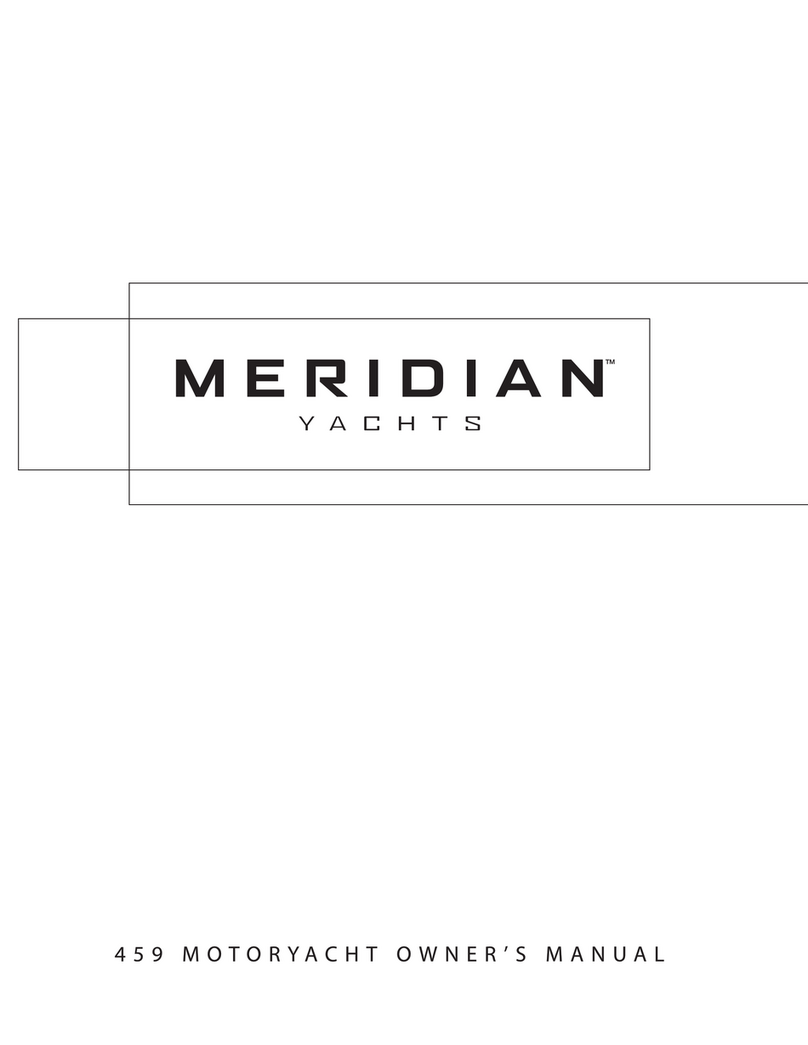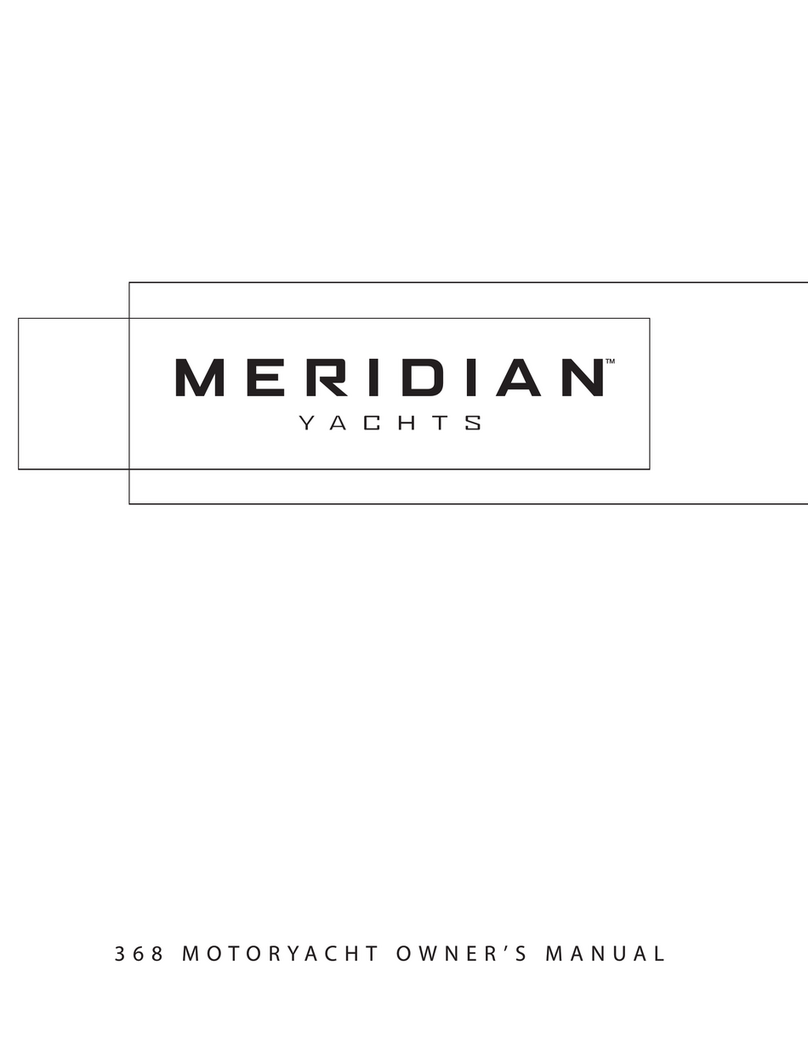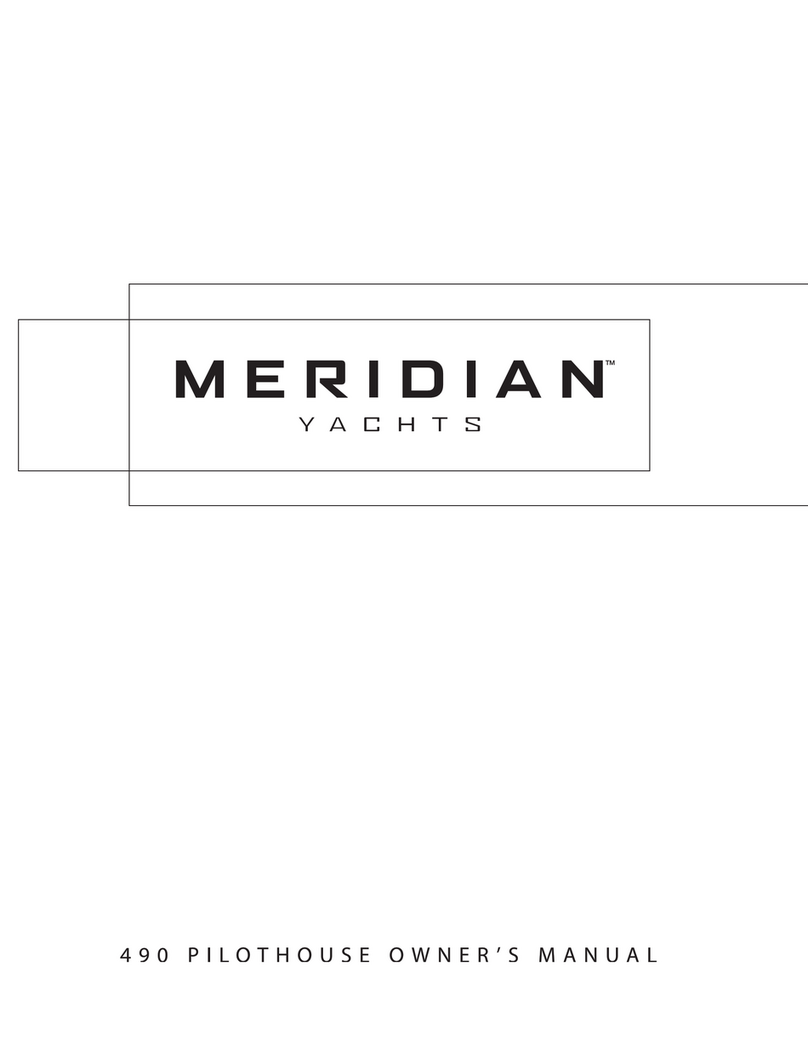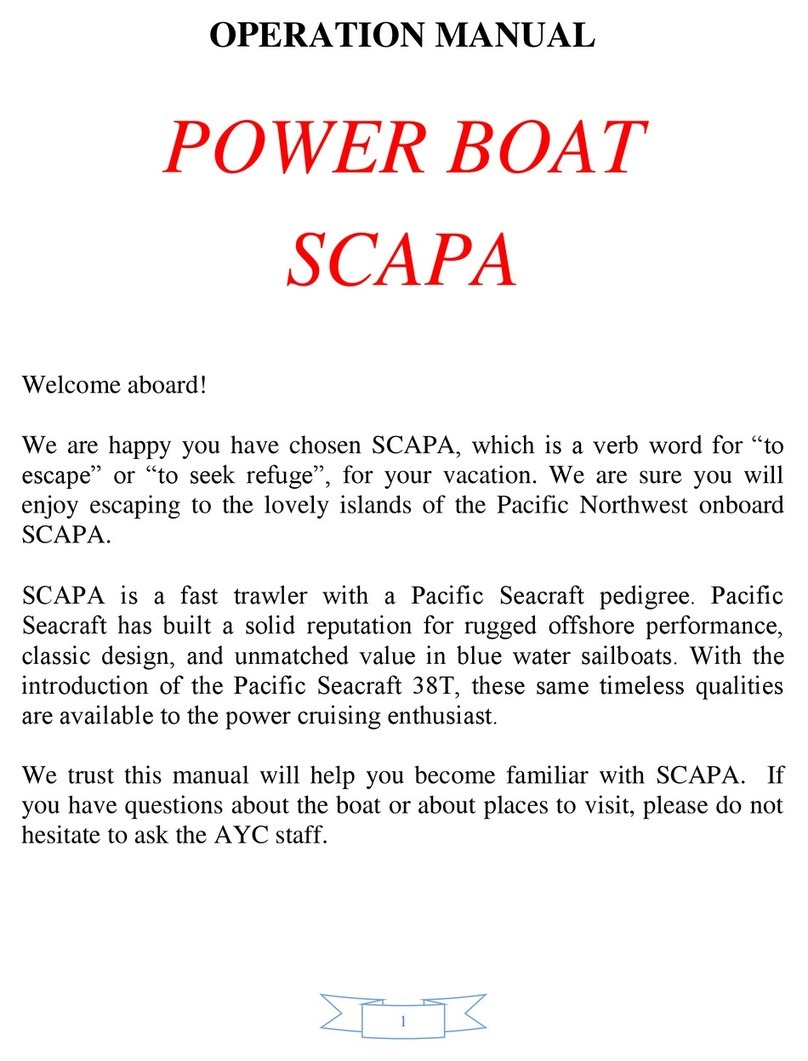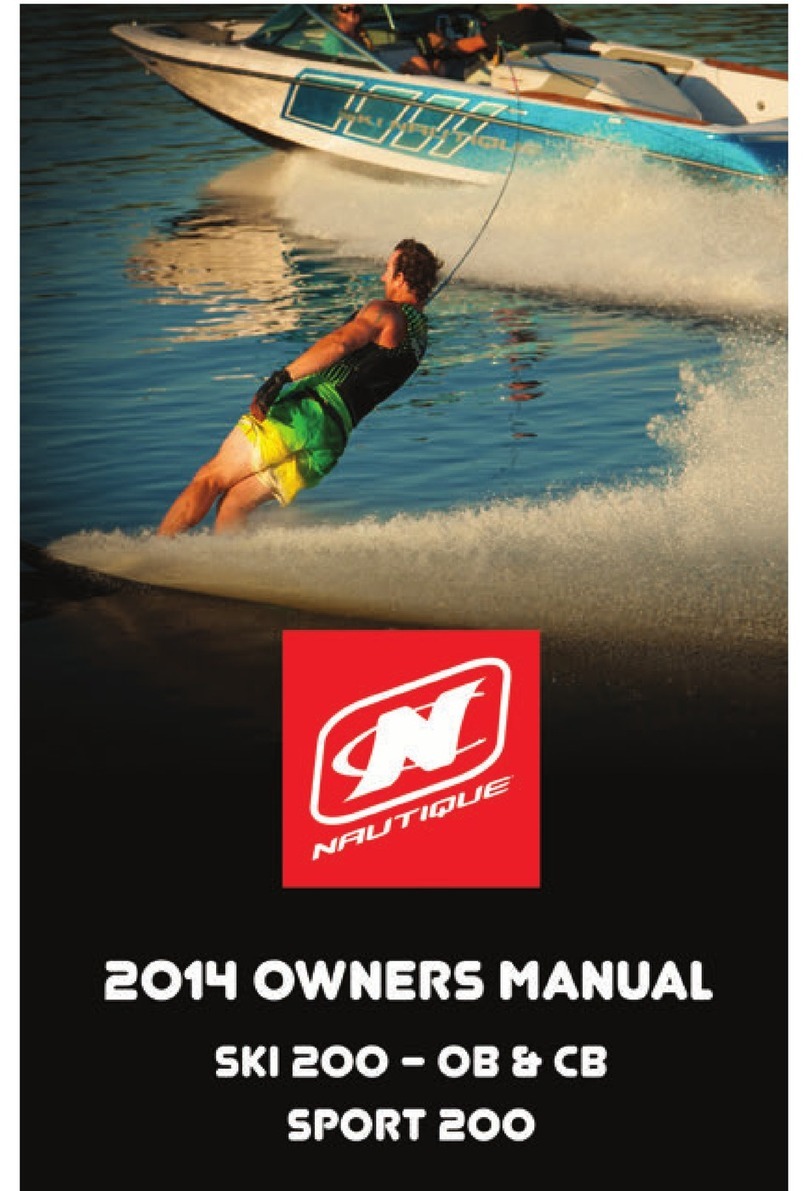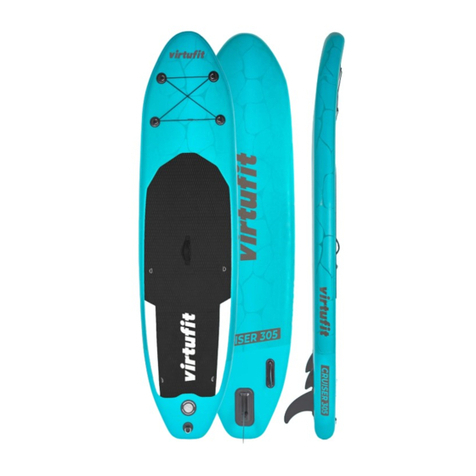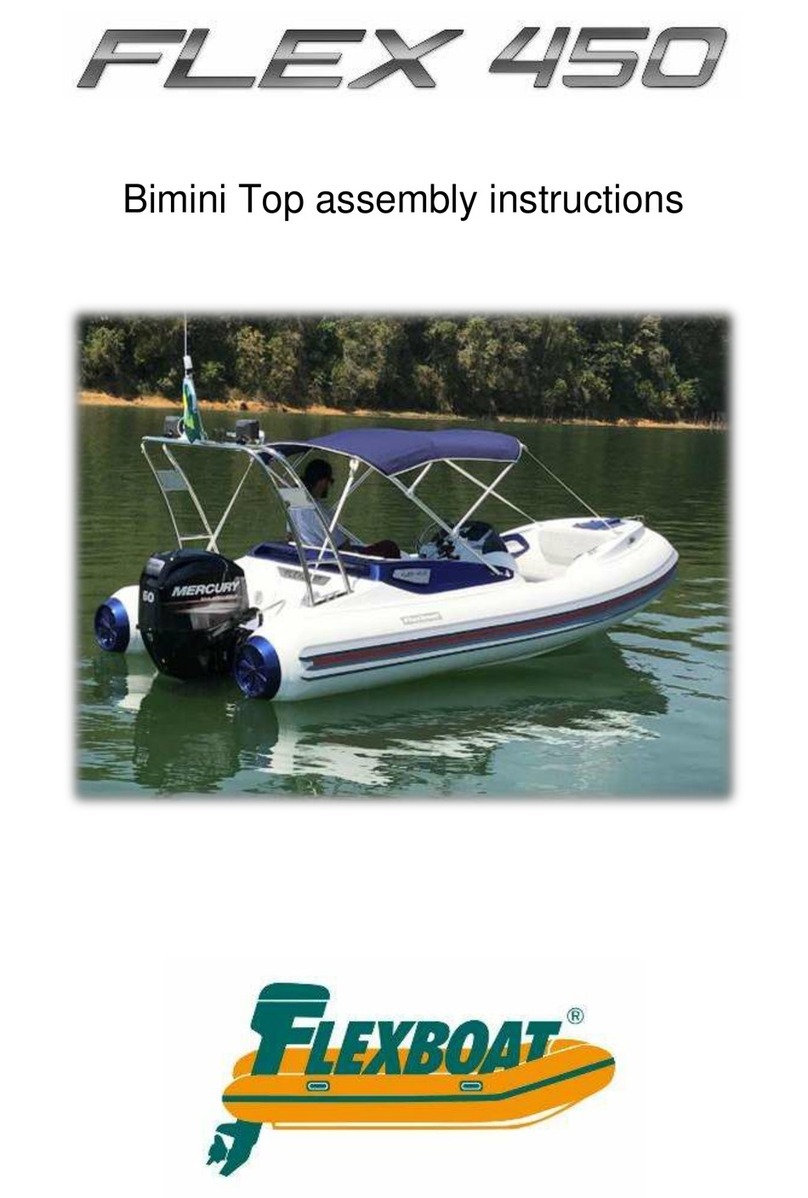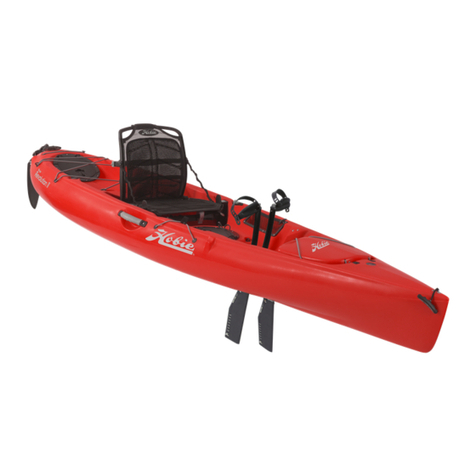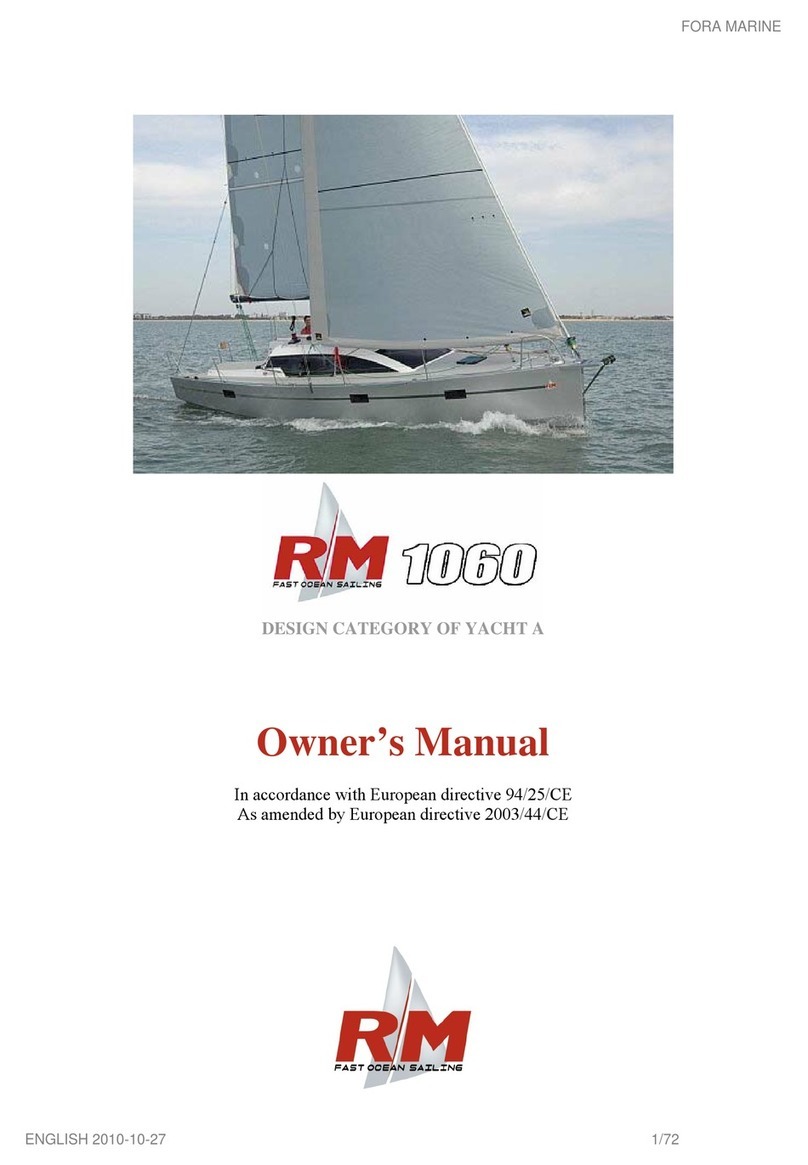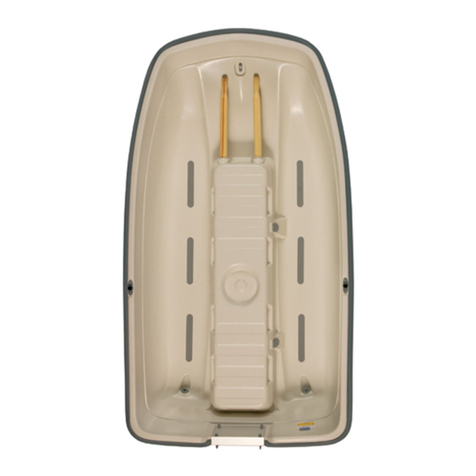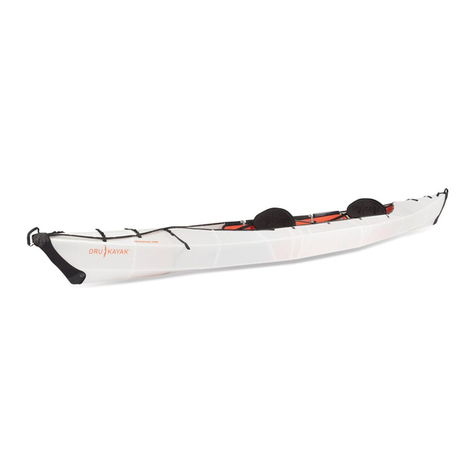Date of Purchase: _________________________________________
Port Engine Serial Number: _________________________________
Starboard Engine Serial Number: ____________________________
Hull Identification Number:__________________________________
Hull Identification Number
•The Hull Identification Number
(HIN) is located onthe starboard
aft corner of the transom.
•Record the HIN (and the engine
serial numbers) in the space pro-
vided above.
•Please refer to the HIN for any
correspondence or orders.
© 2008 Meridian Technical Publications. All rights reserved.
No part of this publication may be reproduced, stored in any retrieval system, or transmitted in any form by any means, electronic, mechanical,
photocopying, recording or otherwise, without prior written permission of Meridian.
Printed in the United States of America.
General Notes
The material in this document is for information only and is subject to change without notice. While reasonable efforts have been made in the
preparation of this document to assure its accuracy, Meridian assumes no liability resulting from errors or omissions in this document, or from
the use of information contained herein.
Due to our commitment to product improvement, Meridian reserves the right to make changes in the product design, specifications, and equip-
ment at any time without notice or obligation. Illustrations and/or photos may show optional equipment.
All Meridian products meet or exceed USCG (United States Coast Guard) and/or NMMA (National Marine Manufacturer’s Association) con-
struction standards. Manufactured with 1,1,1 Trichloroethane, a substance which harms public health and environment during the manufactur-
ing process by destroying ozone in the upper atmosphere.
Proprietary Rights
This document discloses subject matter in which Meridian has proprietary rights. The information and design disclosed herein were originated
by and are the property of Meridian. Neither receipt nor possession thereof confers or transfers any right to reproduce, copy, alter or disclose
the document or any part thereof, any information contained therein, or to construct boats or any item from it, except by written permission
from or written agreement with Meridian. This document is to be returned upon request to Meridian.
Part Number
1920343




















